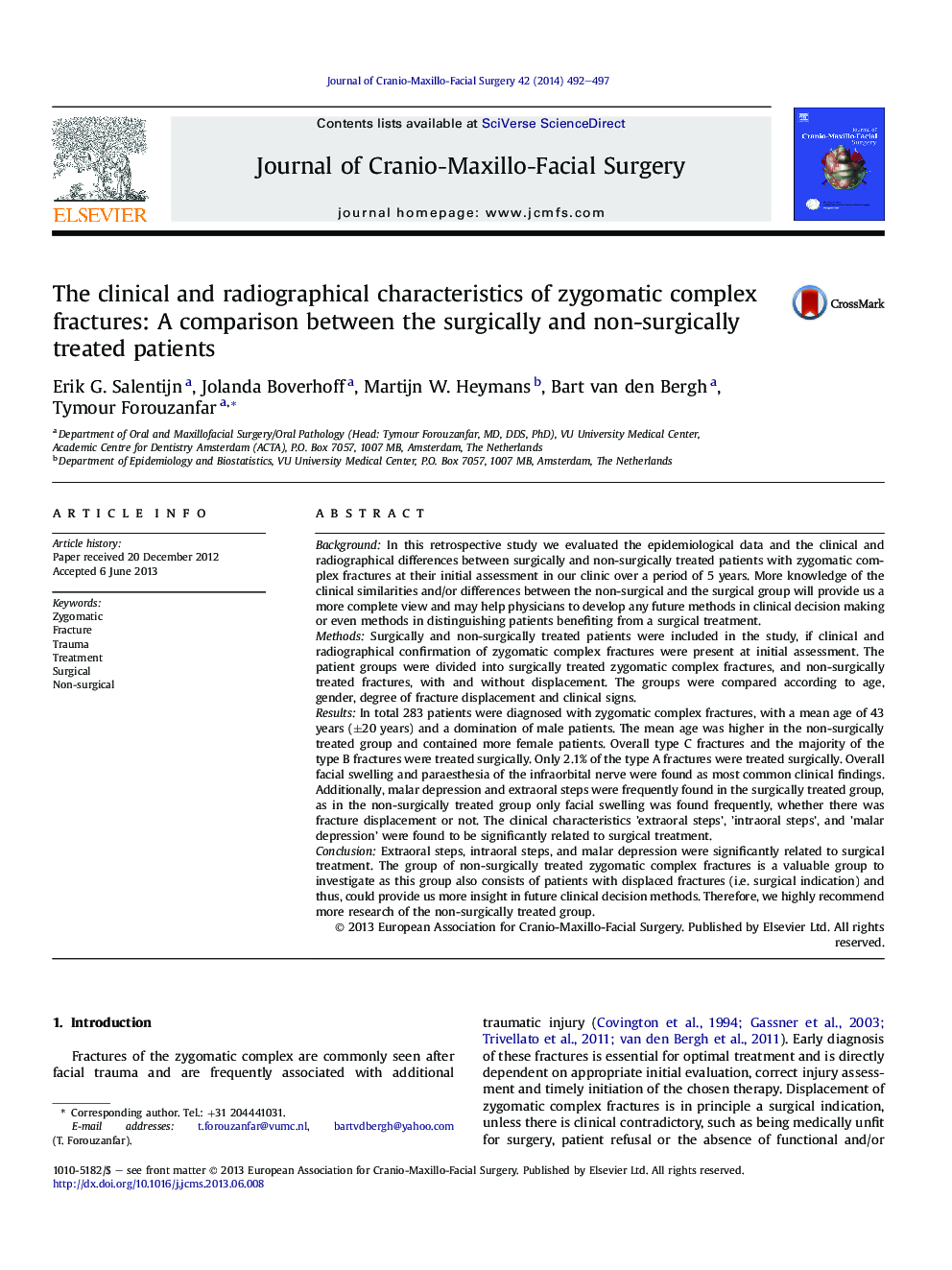| کد مقاله | کد نشریه | سال انتشار | مقاله انگلیسی | نسخه تمام متن |
|---|---|---|---|---|
| 3142572 | 1196789 | 2014 | 6 صفحه PDF | دانلود رایگان |
BackgroundIn this retrospective study we evaluated the epidemiological data and the clinical and radiographical differences between surgically and non-surgically treated patients with zygomatic complex fractures at their initial assessment in our clinic over a period of 5 years. More knowledge of the clinical similarities and/or differences between the non-surgical and the surgical group will provide us a more complete view and may help physicians to develop any future methods in clinical decision making or even methods in distinguishing patients benefiting from a surgical treatment.MethodsSurgically and non-surgically treated patients were included in the study, if clinical and radiographical confirmation of zygomatic complex fractures were present at initial assessment. The patient groups were divided into surgically treated zygomatic complex fractures, and non-surgically treated fractures, with and without displacement. The groups were compared according to age, gender, degree of fracture displacement and clinical signs.ResultsIn total 283 patients were diagnosed with zygomatic complex fractures, with a mean age of 43 years (±20 years) and a domination of male patients. The mean age was higher in the non-surgically treated group and contained more female patients. Overall type C fractures and the majority of the type B fractures were treated surgically. Only 2.1% of the type A fractures were treated surgically. Overall facial swelling and paraesthesia of the infraorbital nerve were found as most common clinical findings. Additionally, malar depression and extraoral steps were frequently found in the surgically treated group, as in the non-surgically treated group only facial swelling was found frequently, whether there was fracture displacement or not. The clinical characteristics 'extraoral steps', 'intraoral steps', and 'malar depression' were found to be significantly related to surgical treatment.ConclusionExtraoral steps, intraoral steps, and malar depression were significantly related to surgical treatment. The group of non-surgically treated zygomatic complex fractures is a valuable group to investigate as this group also consists of patients with displaced fractures (i.e. surgical indication) and thus, could provide us more insight in future clinical decision methods. Therefore, we highly recommend more research of the non-surgically treated group.
Journal: Journal of Cranio-Maxillofacial Surgery - Volume 42, Issue 5, July 2014, Pages 492–497
